This is a problem that causes a spectrum of symptoms like mild but nagging pain in the upper back, or sometimes severe abnormal and painful grinding sensation in the upper back.
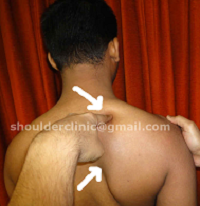
Typical area of pain and grinding sensation
ANATOMY
The area around the shoulder blade is surrounded by powerful back muscles. Under the shoulder blade, and between these muscles, lie several sacs called “bursa/ bursae”. Irritation of these scas results in inflammation, and if this persists over months or years, can result in scarring (sticking down) of these sacs. This results in nagging pain or even audible grinding sensation during movement of the shoulder blade ( scapula)
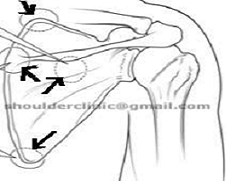
Bursae under the scapula
PREDISPOSING FACTORS
The condition is common is sportspersons, especially those that involve repetitive movement of the scapula.
Dr Bhatia has diagnosed and successfully treated this condition in several swimmers, boxers, cricketers, and some raquet sport players.
Often, it is also found in persons involved in sedentary occupations, especially those that involve sitting in one place over prolonged periods.
CLINICAL PRESENTATION
Pain in the upper back
Snapping sound ( Crepitus/ clicking/ rubbing )
Painful grinding sensation on movements
The pain is nagging, and has usually persisted for months or even years. These patients have typically visited several physiotherapists, spine specialists, and even psychiatrists to find a cure for their pain.
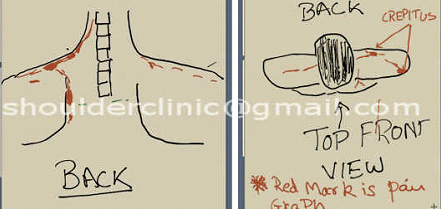
DIAGNOSIS
Xrays and CT scans may show a bony problem like an old malunited fracture, or sometimes an outgrowth ( tumour).
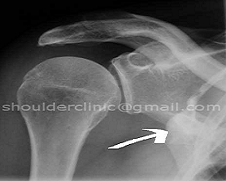
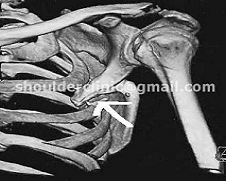
MRI will usually not show any abnormality, but sometimes an inflammed scarred bursa may be seen.
Arrows show bony abnormality on xray and CT scan
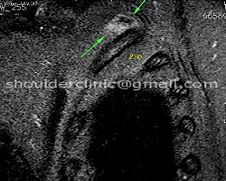
Arrows show inflammed bursa over the chest wall
TREATMENT
Conservative:
Most cases can be treated effectively without surgery.
Dr Bhatia has developed a specific step-by-step approach to treat this condition. This involves exercises, an occasional injection, and posture correction. 90% of the patients suffering from this condition have recovered completely with this therapy.
Surgical:
Some patients may not recover, or even worsen with exercises. Typically, if the painful grinding has persisted over years, it is unlikely to recover without surgery.
The surgery for this condition is performed endoscopically (keyhole) as a daycare procedure by Dr Deepak Bhatia
- The procedure is performed under local or general anaesthesia. A 2.7 mm lens and camera is used to see the bursa and scapula on a Monitor screen. The abnormal bursa is removed, and a part of the bone causing the grinding is removed.
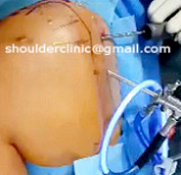
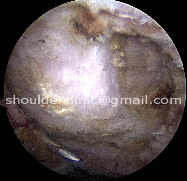
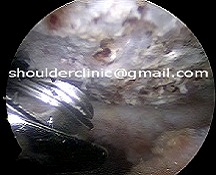
1. Endoscopy for Snapping scapula
2. Bony bump under the scapula
3. Part of the scapula and the bump is removed
- The procedure is painless and the patient is discharged within a few hours after the procedure. The patient may even drive back home the same day, and most patients resume full activity in a few days.
- A sling is used on the day of surgery, and is discarded the next day.
- A special rehab technique devised by Dr Bhatia is used for the next 3 weeks. Thereafter, regular physiotherapy sessions are continued for upto 3 months.
- The results of this procedure are excellent. Pain relief is immediate, and grinding reduces considerably.

